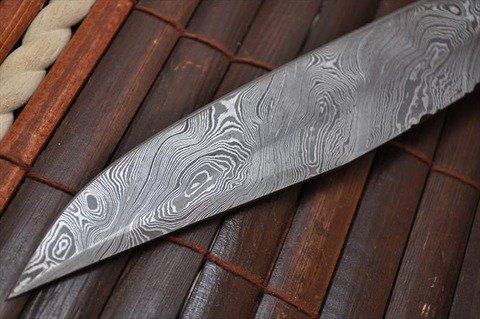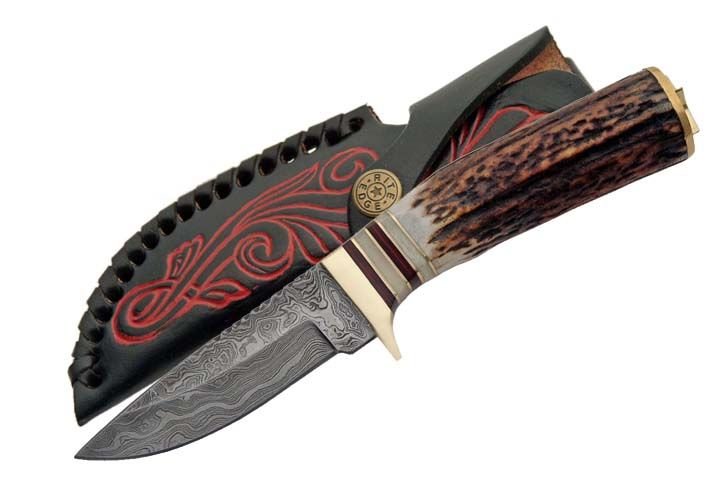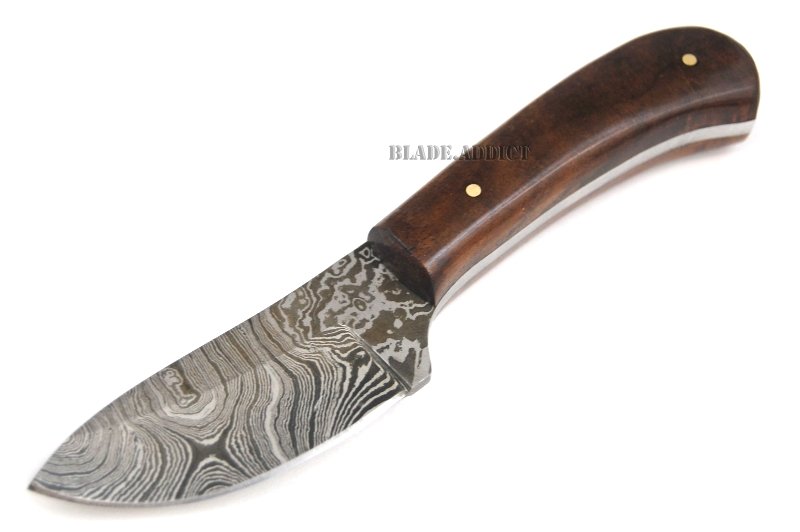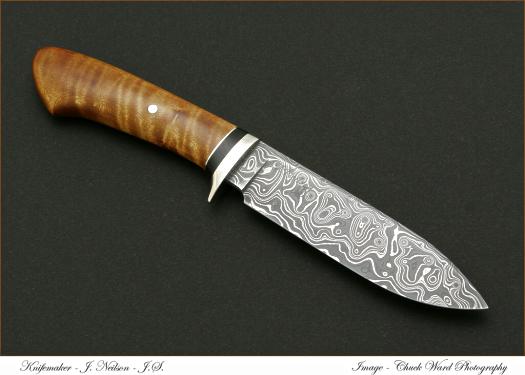BlueOwl358
Esteemed Member
- Messages
- 156
- Reaction score
- 14
- Gender
- Male
- Religion
- Islam
This post isn't about a single man or individual. It is about the forging of the greatest Muslim weapon ever used. Something so powerful, it has been lost to myth and legend. Basically, it is steel that is crafted in a very special way. It is actually Wootz steel, and was made in Central Asia and India. It appears very beautiful in its design, and is incredibly sharp. They say it can cut a falling hair or even a tree trunk. Unfortunately the forging process was lost, but modern research has tried to replicate it. I present, Carbon Nanotechnology.

"Damascus steel was a term used by several Western cultures from the Medieval period onward to describe a type of steel used in swordmaking from about 300 BCE to 1700 CE. These swords are characterized by distinctive patterns of banding and mottling reminiscent of flowing water. Such blades were reputed to be not only tough and resistant to shattering, but capable of being honed to a sharp and resilient edge. Today, the term is used to describe steel that mimics the appearance and performance of Damascus steel, usually that which is produced by either crucible forging or pattern welding.
The original method of producing Damascus steel is not known. Due to differences in raw materials and manufacturing techniques, modern attempts to duplicate the metal have not been entirely successful. Despite this, several individuals in modern times have claimed that they have rediscovered the methods in which the original Damascus steel was produced.
The reputation and history of Damascus steel have given rise to many legends, such as the ability to cut through a rifle barrel or to cut a hair falling across the blade, but no evidence exists to support such claims. A research team in Germany published a report in 2006 revealing nanowires and carbon nanotubes in a blade forged from Damascus steel. This finding was covered by National Geographic and the New York Times. Although modern steel outperforms these swords, microscopic chemical reactions in the production process may have made the blades extraordinary for their time. Some experts expect to discover such nanotubes in more relics as they are analyzed more closely."
http://everything.explained.today/Damascus_steel/
"Damascus swords are the stuff of legend – literally. When Richard the Great faced Saladin, Richard is said to have proved his sword’s might by chopping a tree trunk in half with a single blow. Saladin took a silk scarf, threw it into the air, and let it waft down over his sword, where it was promptly cut in two."
http://io9.com/carbon-nanotubes-were-an-ancient-superweapon-1707615687
"Cast Damascus steel, known as wootz, was popular in the East. It's produced by melting pieces of iron and steel with charcoal in a reducing atmosphere (lacking oxygen). During the process, the metals absorb carbon from the charcoal and the resulting alloy is cooled at a very slow rate. This produces a material with a visible crystalline structure of varying carbide contents."
http://www.thearma.org/essays/damascus-steel.html
Now, whether or not it is that legendary, it is pretty cool nonetheless. This is one of the most famously known sword crafting methods of history. So I am sharing.

"Damascus steel was a term used by several Western cultures from the Medieval period onward to describe a type of steel used in swordmaking from about 300 BCE to 1700 CE. These swords are characterized by distinctive patterns of banding and mottling reminiscent of flowing water. Such blades were reputed to be not only tough and resistant to shattering, but capable of being honed to a sharp and resilient edge. Today, the term is used to describe steel that mimics the appearance and performance of Damascus steel, usually that which is produced by either crucible forging or pattern welding.
The original method of producing Damascus steel is not known. Due to differences in raw materials and manufacturing techniques, modern attempts to duplicate the metal have not been entirely successful. Despite this, several individuals in modern times have claimed that they have rediscovered the methods in which the original Damascus steel was produced.
The reputation and history of Damascus steel have given rise to many legends, such as the ability to cut through a rifle barrel or to cut a hair falling across the blade, but no evidence exists to support such claims. A research team in Germany published a report in 2006 revealing nanowires and carbon nanotubes in a blade forged from Damascus steel. This finding was covered by National Geographic and the New York Times. Although modern steel outperforms these swords, microscopic chemical reactions in the production process may have made the blades extraordinary for their time. Some experts expect to discover such nanotubes in more relics as they are analyzed more closely."
http://everything.explained.today/Damascus_steel/
"Damascus swords are the stuff of legend – literally. When Richard the Great faced Saladin, Richard is said to have proved his sword’s might by chopping a tree trunk in half with a single blow. Saladin took a silk scarf, threw it into the air, and let it waft down over his sword, where it was promptly cut in two."
http://io9.com/carbon-nanotubes-were-an-ancient-superweapon-1707615687
"Cast Damascus steel, known as wootz, was popular in the East. It's produced by melting pieces of iron and steel with charcoal in a reducing atmosphere (lacking oxygen). During the process, the metals absorb carbon from the charcoal and the resulting alloy is cooled at a very slow rate. This produces a material with a visible crystalline structure of varying carbide contents."
http://www.thearma.org/essays/damascus-steel.html
Now, whether or not it is that legendary, it is pretty cool nonetheless. This is one of the most famously known sword crafting methods of history. So I am sharing.



